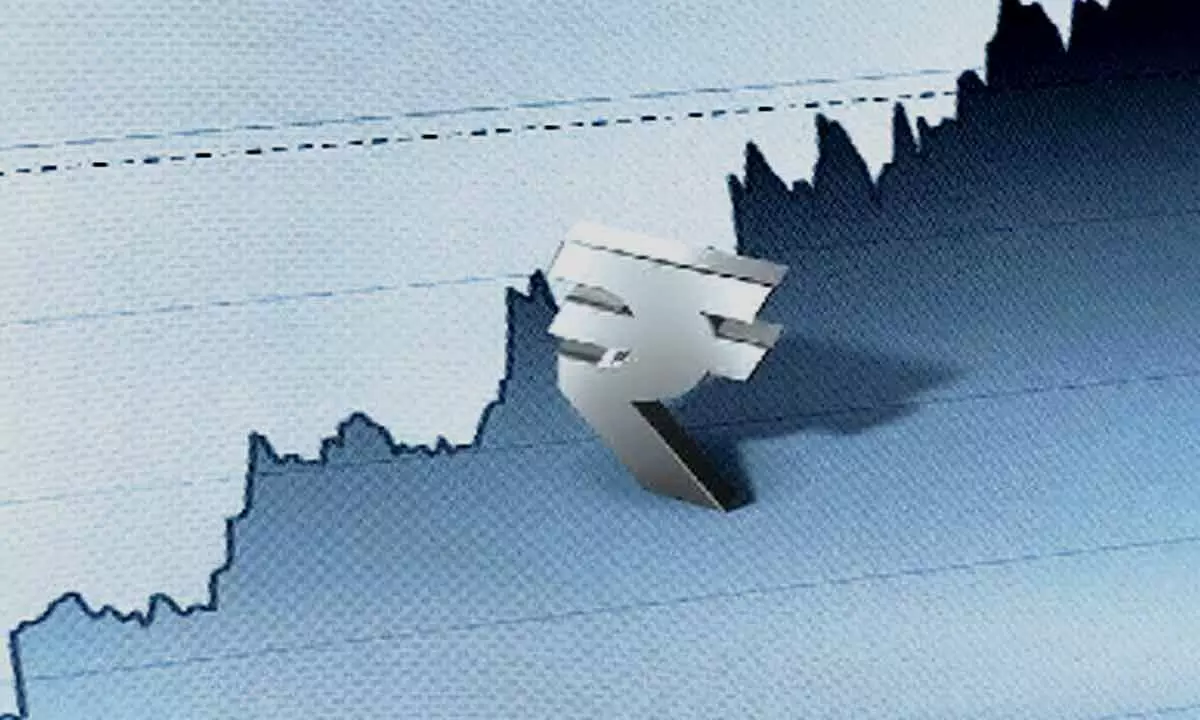More rate hikes on cards
Repo rate may reach pre-pandemic level of 5.15% by end March 2023; RBI in off-cycle meet hiked its benchmark Repo rate by 40 bps to 4.4% and CRR by 50 bps to 4.5%; EMIs of borrowers set to undergo upward revision
image for illustrative purpose

Surplus Liquidity
- Banking system still in surplus mode
- Net durable liquidity at Rs7.2 lakh crore
- RBI to absorb Rs87,000 cr of liquidity from the market in the wake of CRR hike
- Rate hike push to align retail and MSME loans with external benchmarks
- EBLR-linked loans share in advances rose to 39%
Mumbai: Even as Reserve Bank of India has hiked its key policy rate by 40 basis points on Wednesday, experts are of the strong view that further rate hikes as high as 75 basis points, are imminent by the fiscal year end.
The off-cycle meet of Monetary Policy Committee (MPC) announcing hike in benchmark repo rate by 40 bps and another 50 bps hike in CRR kept the broader markets on the tenterhooks, as the realization of siding with changing realms of inflation control gained currency, already palpable for sometime as economies from developed as well as emerging worlds have struggled to rein in the galloping price rises that hurt the masses, and probably classes alike.
With Wednesday's increase, the standing deposit facility (SDF) rate now stands adjusted to 4.15 per cent and the marginal standing facility (MSF) rate and the bank rate to 4.65 per cent, maintaining the LAF corridor.
The MPC also decided to remain accommodative while focusing on withdrawal of accommodation to ensure that inflation remains within the target going forward, while supporting growth, reflecting the pragmatic approach even while traversing the chequered path
assiduously. That asserts the flexibility in RBI's approach to choose the most suitable tool in addressing the most persisting issue, through a combination of tools, conventional to unconventional, or both!
With the current hike of 40 bps in repo rate to 4.40 per cent, it seems the rate cycle has made a U-turn (from the steep cuts seen in early 2020) and RBI would continue to increase the rates going forward and may reach the pre-pandemic level of 5.15 per cent by end March 2023. Further, the CRR hike by 50 bps will exert further upward pressure on interest rates, while sucking system liquidity by additional Rs87,000 crore.
"We believe this simultaneous policy announcement of adjusting both the rate and quantum of liquidity is a clever ploy and reinforces the credibility and reputation of the central bank. The CRR hike could also open up space for OMO purchases by RBI," says SBI Group's Chief Economic Advisor Soumya Kanti Ghosh.
The push to align retail and MSME loans with external benchmarks of late ensured a growing proportion of borrowers to side with EBLR-linked loan whose share in advances have gone up to 39 per cent.
Banks, already having wafer thin margin in retail loans have little incentive in not passing, to a great extent, the present and future hikes to customers whose EMIs should undergo upward revision. With the rise in CRR and expected further hike in benchmark rates, there would
be a marginal increase in MCLR due to negative carry. Further, if banks raise the deposits rates then the cost of funds (CoF) will increase and subsequently MCLR will increase too.
Ghosh said: "We believe the decision for rate hike will be ultimately good for the banking sector as the risk is getting re-priced properly. The situation is different than during the global financial crisis wherein the lending started increasing aggressively (FY05 onwards) much before the rate hike cycle began (March 2010 till October 2011). Currently, the rate hike cycle has begun and now the bank lending will increase factoring in the risk."
System liquidity is still in surplus mode with net durable liquidity at Rs7.2 lakh crore as on May 02. RBI is likely to absorb Rs87,000 crore of liquidity from the market on durable basis through CRR hike announced today. High government borrowing has ruled out the possibility of OMO sale, thus CRR increase seemed as the possible non-disruptive option of absorbing the durable liquidity.
Analysts believe that it opens up space for RBI to conduct liquidity management in future through OMO purchase to address duration supply while absorbing some part of the durable liquidity.
The overarching focus on inflation is significant as it goes back to the normal mandate of the MPC which is to curb inflation as growth seems to be better placed today. But not tackling inflation now, growth can be jeopardized.
"This will be the main message from the so-called interim policy announced," says Madan Sabnavis, chief economist, Bank of Baroda (BoB).
Abheek Barua, chief economist, HDFC Bank, says, "we expect three more rate hikes in this fiscal by the RBI now with the repo rate likely to end the year at 5.1 per cent."
The CRR hike could also open up space for OMO purchases by RBI
- Soumya Kanti Ghosh, SBI group's chief economic advisor

